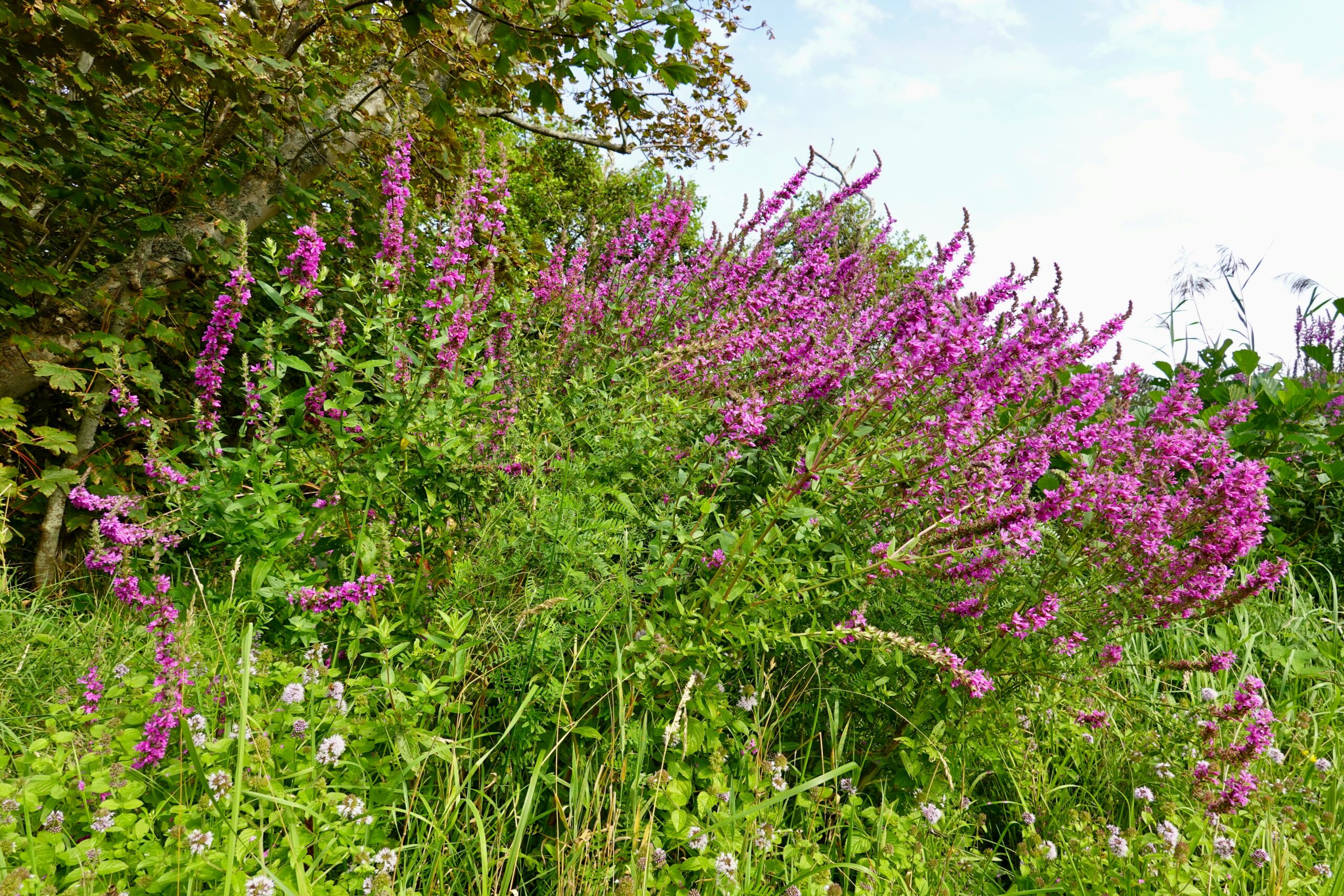The Environmental Protection Authority has approved the import and release of four insects in the Manawatū-Whanganui region to control the spread of purple loosestrife, an invasive wetland weed.
Purple loosestrife is highly aggressive, displacing native wetland vegetation and disrupting ecosystems. It is hoped that the release of these beetles will prevent or dramatically slow more widespread infestations across Aotearoa.
The SMC asked experts to comment. Please feel free to use these comments in your reporting or follow up with the contact details provided.
Dr Angela Bownes, Science Team Leader, Biocontrol & Molecular Ecology, Manaaki Whenua – Landcare Research, comments:
“Purple loosestrife (Lythrum salicaria) has been a tantalising biocontrol target for many years. This same weed has been successfully controlled using four insect biocontrol agents (beetles) in both the USA and Canada. In 2021, Horizons Regional Council approached Manaaki Whenua – Landcare Research to assess the potential, through a feasibility study, for a successful biocontrol programme for purple loosestrife in New Zealand. Following this, Horizons submitted a release application to the Environmental Protection Authority (EPA) to gain approval to release all four beetle species, which has just been approved.
“Purple loosestrife is native throughout Europe and Asia, except for high mountainous regions and most northerly latitudes, and is also found in south-eastern Australia and Tasmania. It was introduced here as a garden ornamental and was first recorded as naturalised in 1958. With its showy pink flowers on tall spikelets, purple loosestrife was particularly popular as a residential pond plant and for stream plantings, and from there it escaped to invade aquatic and semi-aquatic habitats, roadside ditches, and even pastures on farmland. Seeds are mainly spread via waterways, but also by birds, livestock, contaminated machinery, hay and footwear.
“The weed rapidly invades damp ground and shallow water, such as wetlands, lake margins, and streams and rivers, forming dense infestations and excluding native vegetation. It can displace all other wetland and riparian flora, drastically altering native ecosystems and reducing food sources for many species of fish and birds.
“The worst infestations occur in Horowhenua, in the Manawatū-Whanganui region on the west coast of the North Island, but it is also naturalised in Canterbury and found in many other locations too. Since the feasibility study in 2021, purple loosestrife has spread into Wairio Wetland from another wetland, Boggy Pond, requiring urgent intervention from the Department of Conservation to prevent the weed from spreading into Lake Wairarapa.
“The four beetle species now approved for release in New Zealand by the EPA do not pose a risk to any native or taonga species, based on evidence from extensive lab and field research conducted for the biocontrol programmes in North America. Consultation about releases of the agents onto purple loosestrife infestations in the Horowhenua will continue prior to importing the beetles from the US. When they are imported, they will undergo rigorous screening to ensure they are not carrying any unwanted associated organisms such as gut parasites or parasitoids. Only then, will they be eligible for release into the New Zealand environment which will also require mass-rearing to build up high enough numbers for release.
“Biocontrol is a painstaking process, it takes time and it is tightly regulated, but if everything goes to plan, weed biocontrol agents can get to work quickly, are self-sustaining and can repay any initial investment many times over. We’re pleased that this important milestone has been reached.”
Conflict of interest: Angela was involved in the Manaaki Whenua – Landcare Research feasibility study and surveys to assess the potential for developing a successful biocontrol programme for purple loosestrife, which was commissioned by the Horizons Regional Council.
